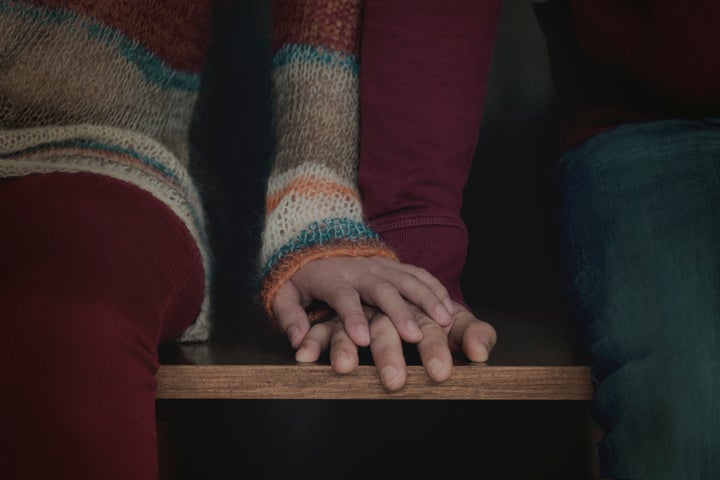For some, the winter isn’t just a chilly season. It can be a brutal time for a person’s mental health.
Seasonal affective disorder is a condition that affects half a million American adults and can make a few months out of the year feel downright unbearable. It’s common to feel bouts of the winter blues (in fact, about 10 to 20 percent of people in the U.S. experience them, according to the Cleveland Clinic), but those with seasonal depression may experience symptoms and low moods that sometimes make everyday tasks feel impossible.
Here are a couple of things to keep in mind about seasonal affective disorder, its treatment options and how it affects people’s daily lives.
1. The underlying cause of SAD isn’t just bad weather.

No, you can’t blame SAD on the dreary, cold days. In most cases, SAD is just a seasonal component of clinical depression or bipolar disorder, according to Michelle Riba, a professor of psychiatry and the associate director of the University of Michigan Depression Center.
“For people who see a regular pattern every year of getting sad, anxious or a cycling of moods, the first thing they need to do is to see someone to get an overall diagnosis,” she said. “They need to treat the underlying depression.”
2. It’s not a punchline.
It can be easy to blame a bad mood on the earlier dark skies, but people should think twice before saying they “must have SAD.” The condition is hardly something to be flippant about, Riba said.
“It’s not something to laugh about or joke about,” Riba said. “It’s a significant health problem.” In other words, add SAD to the list of mental illness terms that shouldn’t be used nonchalantly.
3. There are multiple ways to treat SAD...
For a long time, many considered light therapy one of the gold standards of SAD treatment. The method helps sufferers by exposing them to artificial light similar to sunlight. Experts theorize this technique helps correct the body’s inner circadian rhythm and produces feel-good hormones that people get from the sun during other times of the year.
However, light therapy isn’t the only route. Since the key is treating the underlying depression, that could include methods like cognitive behavioral therapy, medication or both. A study published in the American Journal of Psychiatry found that talk therapy may even be more effective than light therapy when it comes to treating SAD. But keep in mind that the best method varies from person to person, Riba says. Any active treatment is better than nothing.
4. ...But it may take some time.

Riba says that most doctors don’t determine if a person has SAD until they’ve experienced at least two episodes (essentially seasons) of the disorder. That means it may take a little while to make sure it’s the right diagnosis. Physicians want to make sure that they’re treating every aspect of a mental health disorder properly.
5. It’s debilitating.
Symptoms of SAD include sadness, fatigue and a loss of motivation. Any form of depression can also be physically exhausting. People with the condition often experience headaches and changes in appetite in addition to their emotional symptoms.
6. SAD doesn’t always occur in the winter.
It’s rare, but some people do experience the disorder in the spring or summertime. These symptoms usually include increased feelings of agitation or anxiety, according to the Mayo Clinic.
7. The condition is complex.

According to Riba, SAD can not only be a component of major depression, but also bipolar disorder or other mental health issues. A rare case of SAD also may have contributed to one woman’s obsessive compulsive disorder flareups during the winter months.
Experts agree that there may be a tie between seasonal changes and exacerbation of illnesses. Like all mental health conditions, the disorder is complicated and as such, deserves thoughtful, tailored and effective treatment from a physician.
8. It’s more prevalent in northern states.
People who live in colder, cloudier climates may be more susceptible to the mental health condition. Northern states have higher rates of SAD than southern states, according to the University of California, Irvine.
9. SAD is more common in women.
Studies show women have higher rates of depression than men, including SAD, the New York Times reported. However, that doesn’t mean men are immune. Mental illness doesn’t discriminate and can affect anyone, regardless of gender, ethnicity or any biological factor.
10. It should be taken seriously.

Above all, mental health conditions like SAD are manageable, but only if people seek the help they need.
“It’s important for people to recognize these signs within themselves and get evaluated,” Riba said. “This isn’t a trivial problem, it’s part of a major mood disorder that really needs to be addressed. But it is treatable.”
If you or someone you know needs help, call 1-800-273-8255 for the National Suicide Prevention Lifeline. You can also text HOME to 741-741 for free, 24-hour support from the Crisis Text Line. Outside of the U.S., please visit the International Association for Suicide Prevention for a database of resources.
